Choosing the Best Snowshoes for Beginners
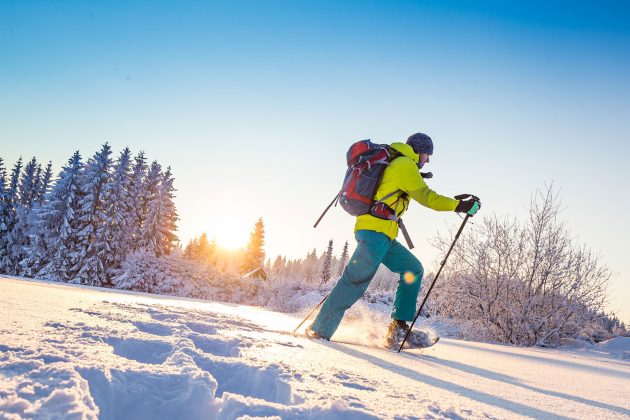
I’ve heard a lot of people say, “If you can walk, you can snowshoe.” And that’s true to some extent. But from my experience, I’ve found that snowshoeing can be a little more complicated than just walking. I think a better phrase would be, “If you can hike, you can snowshoe.” And that goes for having the right footwear, including the best snowshoes for beginners.
There’s some advantage to having hiking experience in the sport of snowshoeing, like knowing when to tackle a steeper hill or how to navigate rugged or backcountry terrain that’s not the same as simply walking on a paved road or a cleared trail with little-to-no obstructions.
If you’re new to snowshoeing, you’ll want to start by exploring marked trails. You need to have a good set of snowshoes that are the right fit for your height and weight. You’ll also need sturdy poles with snow baskets (which are essentially snowshoes for your poles). It’s also important to have a good set of winter snow boots that are comfortable, waterproof and, preferably, have good ankle support.
Yes, snowshoeing can be as easy as hiking if you have the proper gear. When I first snowshoed, I started in my yard after a good snow fall in my home state of Montana. I tested out walking normal, then walking up small hills, then walking down small hills. I tested walking over a down tree and falling and getting back up again.
I’ve learned that when you’re snowshoeing downhill, you should keep your body upright with your knees slightly bent like you’re riding an escalator. Lift your feet and go slow. Don’t rush. When you’re going uphill, dig into the snow and pound out each of your steps a few times before transferring your weight. If the hill is steep, zig zag up the hill. When you’re crossing a big log or down tree, step right up to the log, then step up on the log at the center of your foot while using your poles for security before you step back down on the other side.
If you’re just starting out snowshoeing, you may want to start out with an easy 20- to 30-minute route and avoid crossing creeks. Another tip is to stay about two pole lengths between other snowshoers in case of falls so you don’t get poked by someone else’s pole. If you do fall, one tip I’ve learned over the years is to crisscross your poles evenly (making an X) and hold on to the crisscross in the center of both poles with your hand. Then, use the poles as a brace for pushing yourself up if/when you fall. This prevents your hand from plunging down in deep snow and gives you added support to push yourself up easier.
As with any backcountry or outdoor activity, research things before you go. Check the weather and avalanche conditions, plan your route, bring your first aid kit and make sure to dress in layers. Bring a GPS unit, a map, a compass and a cell phone. And of course, know how to use them. Always be aware of large stumps that could be hidden under the snow, keep it simple at first and stay on designated trails.
Here are my recommendations for six of the best snowshoes for beginners — from children’s snowshoes to adult snowshoes, and those that can fit a variety of heights and weights, as well as rated for condition.
1. Winterial Lightweight Shasta Snowshoes - 25 Inch
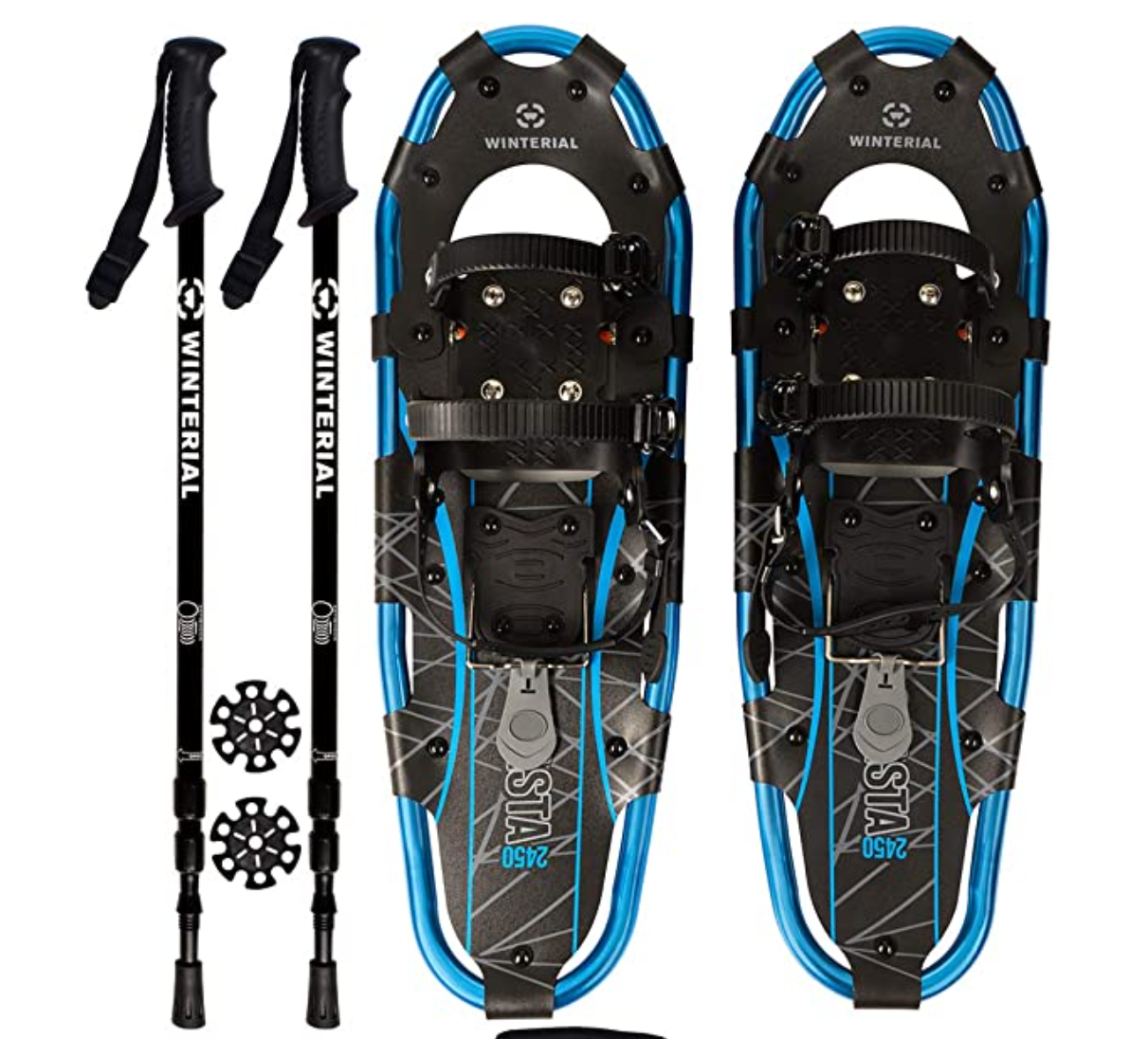
These Winterial Shasta snowshoes are great for beginners and intermediate snowshoers. The 25-inch snowshoes are ideal for people between 140 and 200 pounds. Remember, too, to account for your backpack weight if you’re carrying gear. A basic rule is the heavier the person, the wider snowshoe you’ll want for the best support. For example, the Winterial Highland Snowshoes are 30 inches and can support up to 220 pounds. They are similar to the Shasta snowshoes with added support and durability.
These Shasta snowshoes come with the poles and a carrying bag, so you can snowshoe right out of the box if you have waterproof neoprene boots — like from Muck or LaCrosse or Bogs. These snowshoes are lightweight with an aluminum frame and are ideal for recreational snowshoeing. The foldable poles make stowing them away a breeze, and they’re anti-shock so they will perform well for you and keep you comfortable while trekking through deeper snow. These snowshoes also have an easy-to-use ratchet strap for securing your boots.
2. Tubbs Women’s Mountaineer Snowshoes

These stylish and lightweight rugged Tubbs Women’s Mountaineer snowshoes are built to last and will give you confidence as a beginner out in the snow. With a higher price point, you’re getting a lot of upgrades with these snowshoes. They have an Active lift heel lift that will reduce calf fatigue if you’re snowshoeing longer distances. The bindings are easy to use, and you’re getting a Pro-Step frame that reduces stress on your joints while hiking.
These snowshoes also have a razor-sharp toe crampon with eight teeth so you have constant contact with a wide range of terrain in tougher snow. If you’re snowshoeing in deeper snow with inclines, these snowshoes are ideal. These snowshoes will also support up to 200 pounds and are great for trails and backcountry snowshoeing.
3. Xtrempro 2 Piece Trekking Adjustable Poles and Snowshoes Set
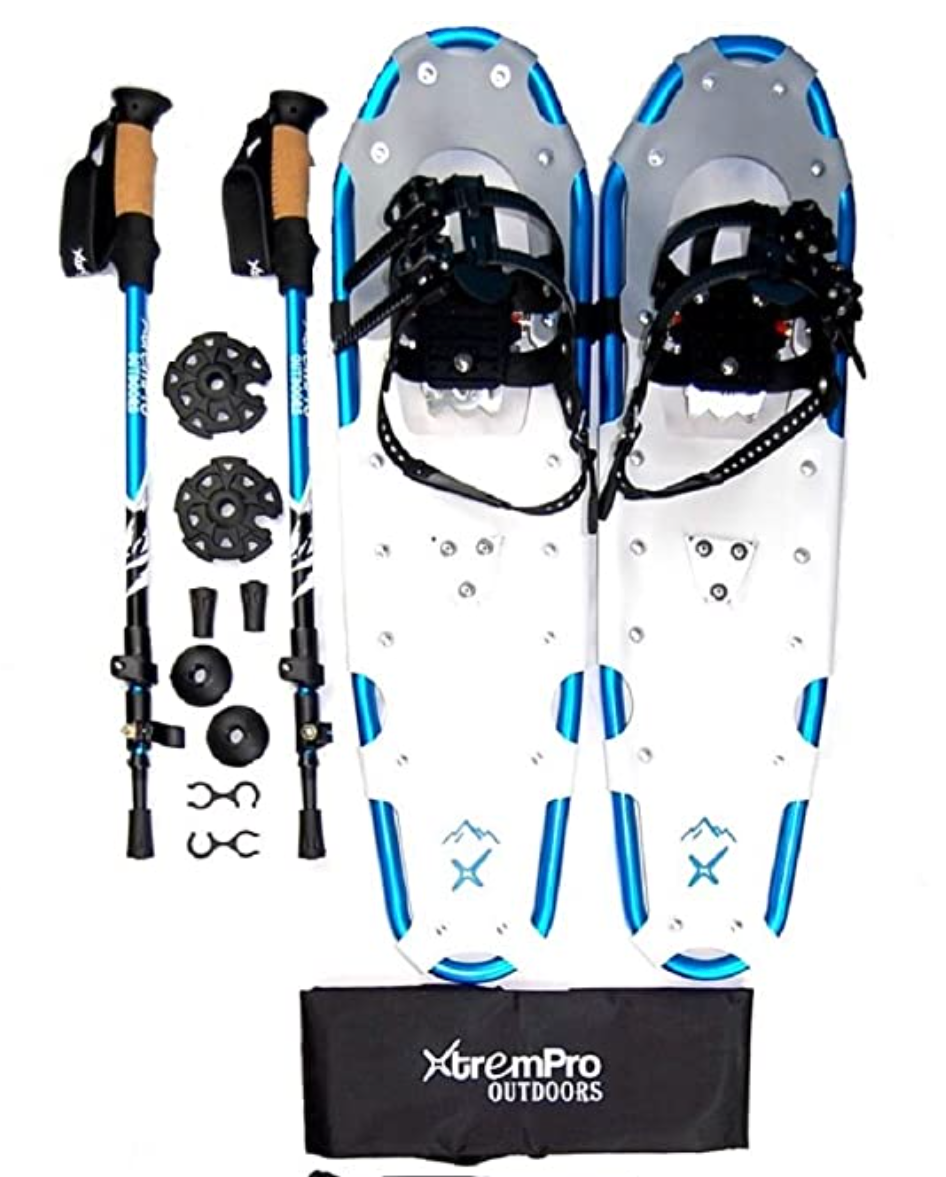
If you’re wanting to try snowshoeing in your yard, local trails or forest service areas, this Xtrempro 2 Piece Trekking snowshoe set will perform well for you and get you snowshoeing right out of the box for around $100. The poles will keep you secure, and the 3D-frame-designed lightweight aluminum snowshoes are made to keep your comfortable while you’re hiking and descending on easy to moderate slopes.
These snowshoes also have a pretty heavy-duty crampons to help chew through light ice and packed snow, so you can securely hike on trails. With a 36-inche frame, these snowshoes can hold up to 350 pounds, making this set a popular choice for hikers carrying heavier packs or big and tall hikers that need extra support.
4. Men’s MSR Revo Ascent Snowshoes
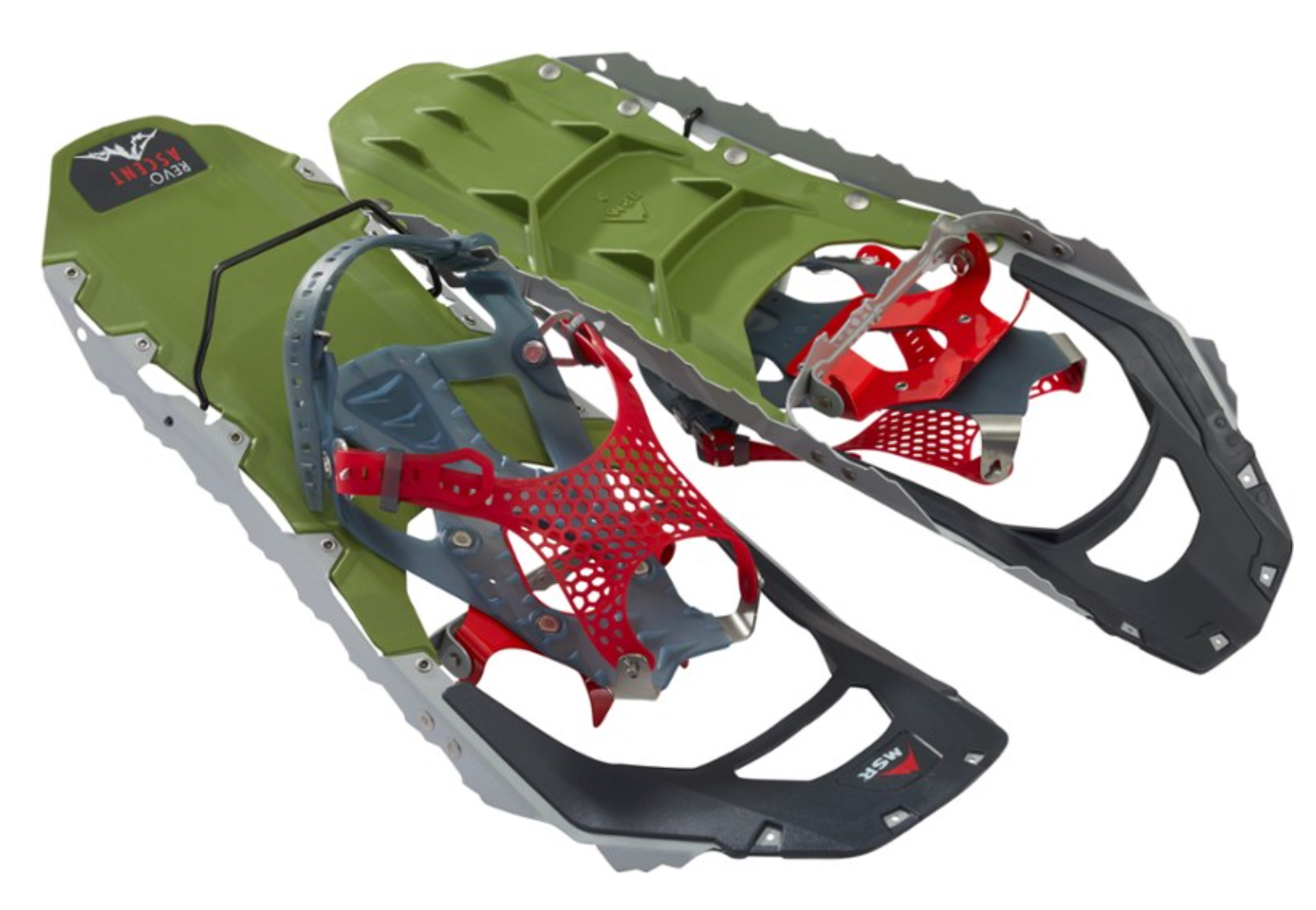
These snowshoes seem to sell out quickly and have a nice flexible underfoot. The MSR Revo Ascent is also incredibly rugged and durable with an injection molded ExoTract plastic desk that can hold up in tough conditions. They also have freeze-resistant mesh straps, aggressive perimeter teeth. At 22 inches, these snowshoes can hold up to 180 pounds, including the weight of a hiker with gear.
5. Men’s Chinook Trekker 25 Snowshoes
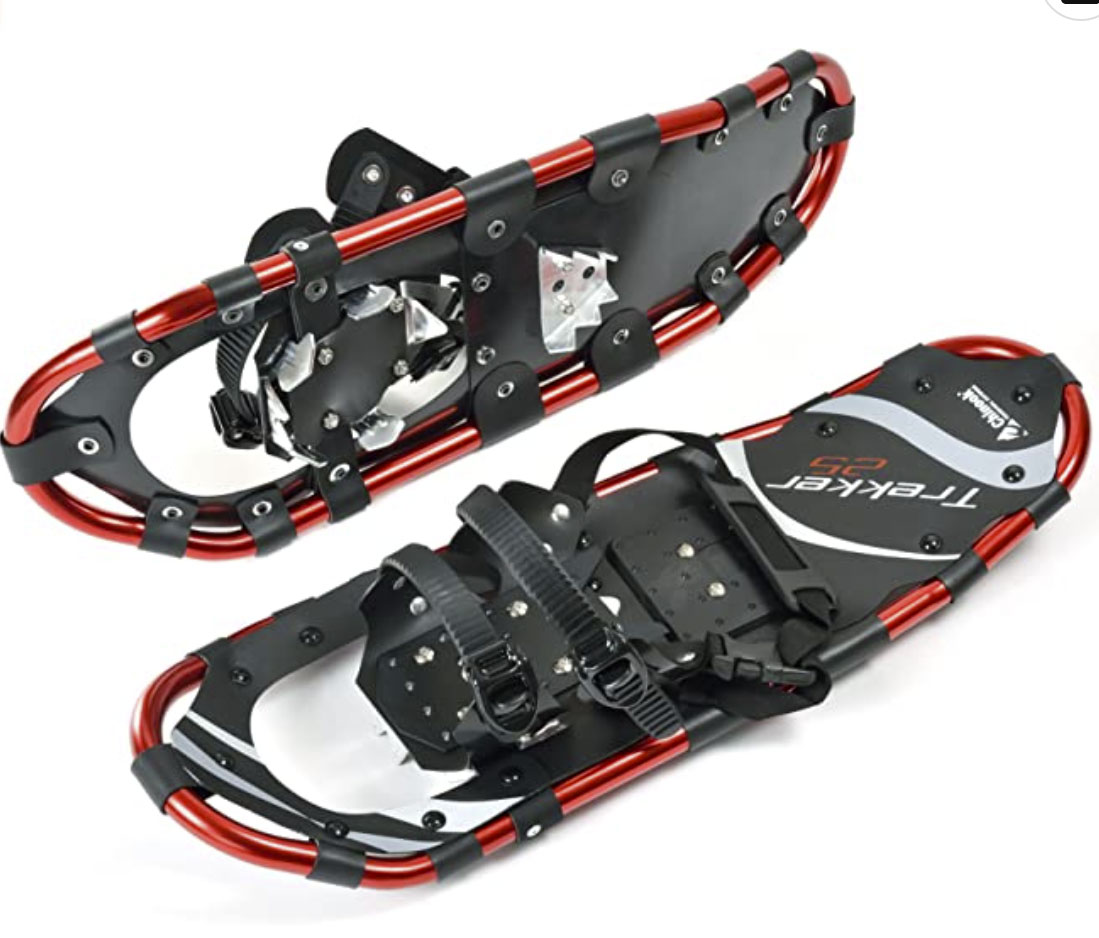
The Chinook Trekker 25’s heavy duty aluminum crampons rotate freely to bite into snow and let the tails drop to shed snow, while their heel crampons provide traction for heading down mild slopes. The recommended load capacity is 130 to 210 pounds, and they are lightweight and feature a strong aluminum frame with an ergonomic design to ensure comfortable and easy walks.
And, since the latches on this snowshoe are easy to tighten and loosen, you won’t be spending too much time adjusting your snowshoes out on the trail.
6. L.L. Bean Kids’ Winter Walker Snowshoes
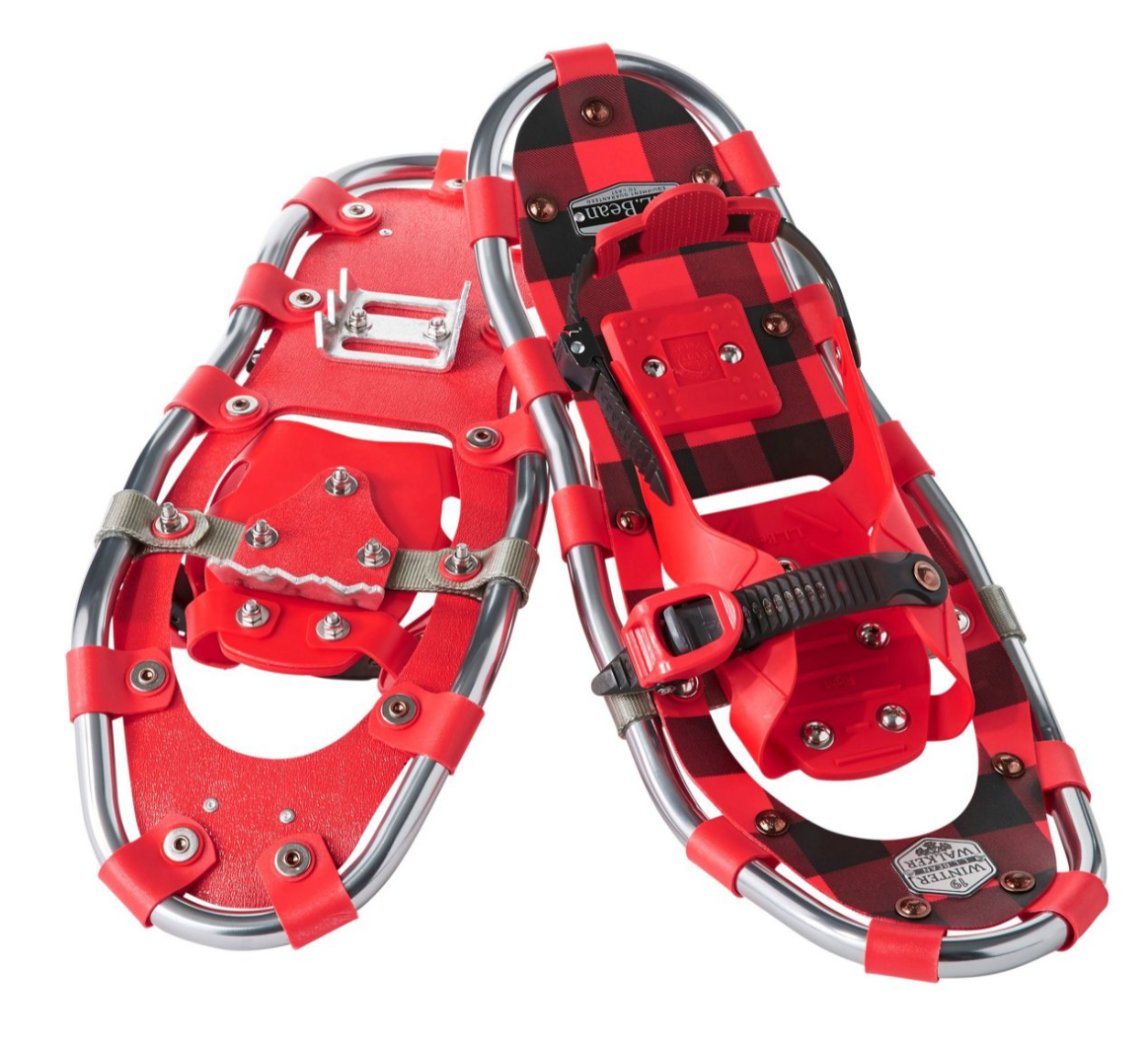
If you’re heading out snowshoeing with kids, these L.L. Bean Kid’s Winter Walker snowshoes are a good choice for getting your kids comfortable walking in snowshoes. You can purchase these snowshoes in a 16 inches that can hold up to 60 pounds or a 19 inches that’s recommended for kids between 50 and 110 pounds. They are easy to adjust by kids themselves, the bindings hold boots well, and they’re lightweight with an aluminum frame.
Suzanne Downing is an outdoor writer and photographer in Montana with an environmental science journalism background. Her work can be found in Outdoors Unlimited, Bugle Magazine, Missoulian, Byline Magazine, Communique, MTPR online, UM Native News, National Wildlife Federation campaigns and more.
Feature image by Lukas Gojda, Shutterstock
We are committed to finding, researching, and recommending the best products. We earn commissions from purchases you make using the retail links in our product reviews. Learn more about how this works.
 Your Privacy Choices
Your Privacy Choices
 The
The